“If you want to scale your social media results, you need to post a dozen content daily, seven times weekly, without skipping a calendar day,” says a random self-acclaimed social media expert.
Social media consistency is crucial in establishing your brand on social media, growing your fan base, converting prospects to customers, and nurturing existing customers into advocates.
But we often mistake consistency for posting every day and every time. While posting frequency is part of it, consistency goes beyond that.
In this article, we will explain what consistency means and how you can effectively use its power to achieve your social media marketing goals in 2024.
What Is Social Media Marketing Consistency?
Social media consistency means maintaining a regular, uniform, and reliable presence across your social channels, such as Facebook, Instagram, Twitter, and others. This includes:
Tone Of Voice
Tone is simply how you communicate with your social audience through content. It can depict things like brand personality and attitude. Depending on your brand offerings, tone can be formal, casual, authoritative, humorous, and sometimes totally inclusive.
Take Duolingo, a language learning app, as an example. The brand uses a casual and humorous tone to address its audience and effectively convey a message.
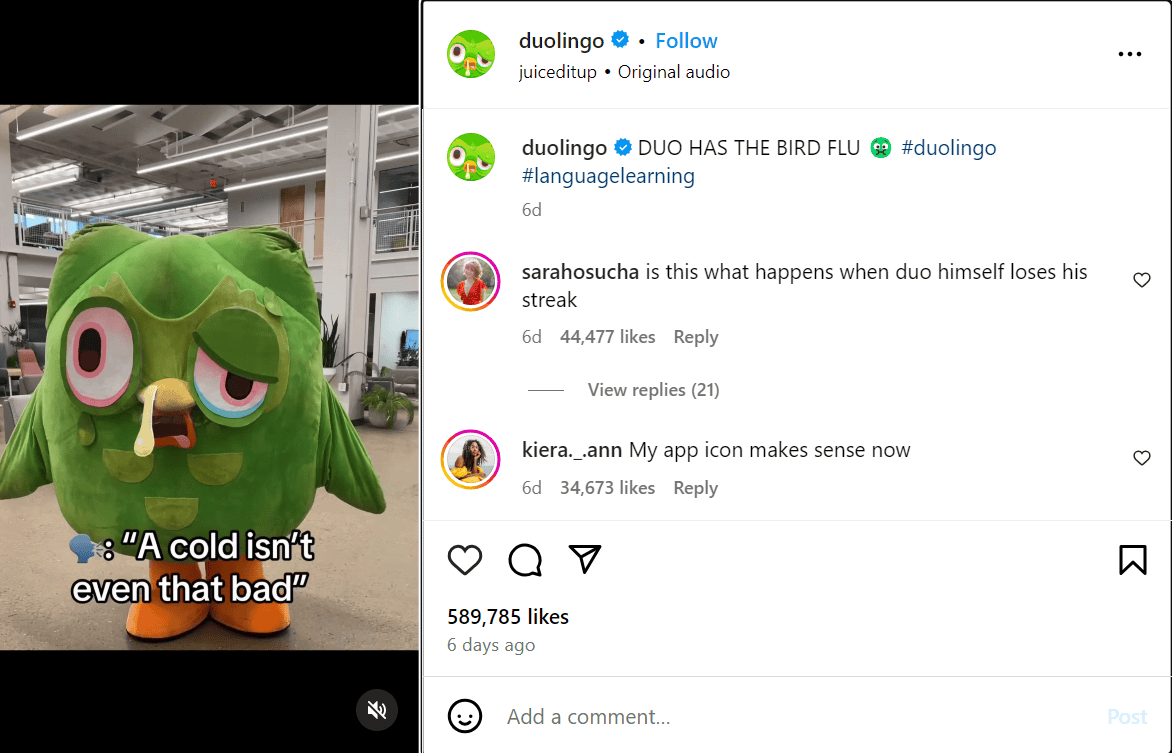
In contrast, Gymshark, a fitness apparel and accessories brand, takes a confident, motivational, and sometimes edgy tone.
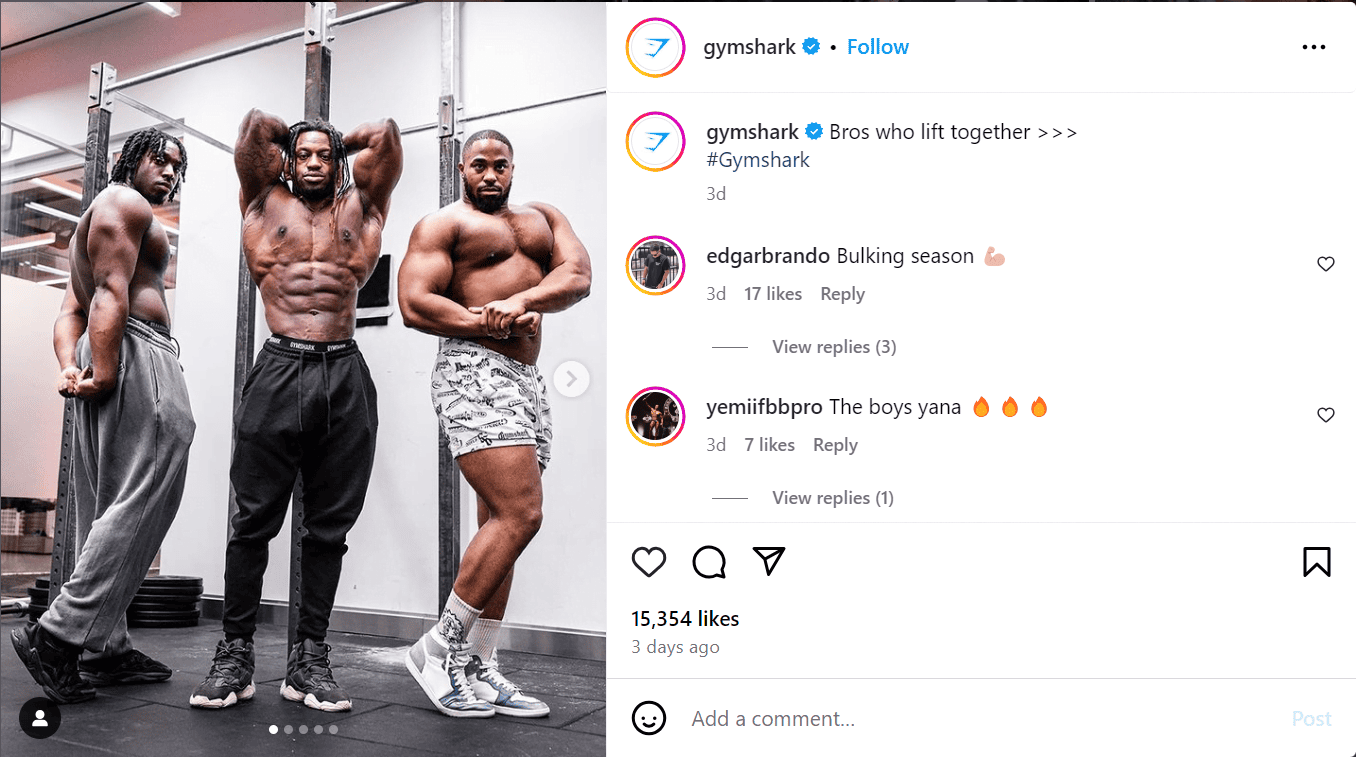
Others, like Headspace, use a calming, positive tone to provide support and encouragement, aligning with their mindfulness and mental well-being mission.
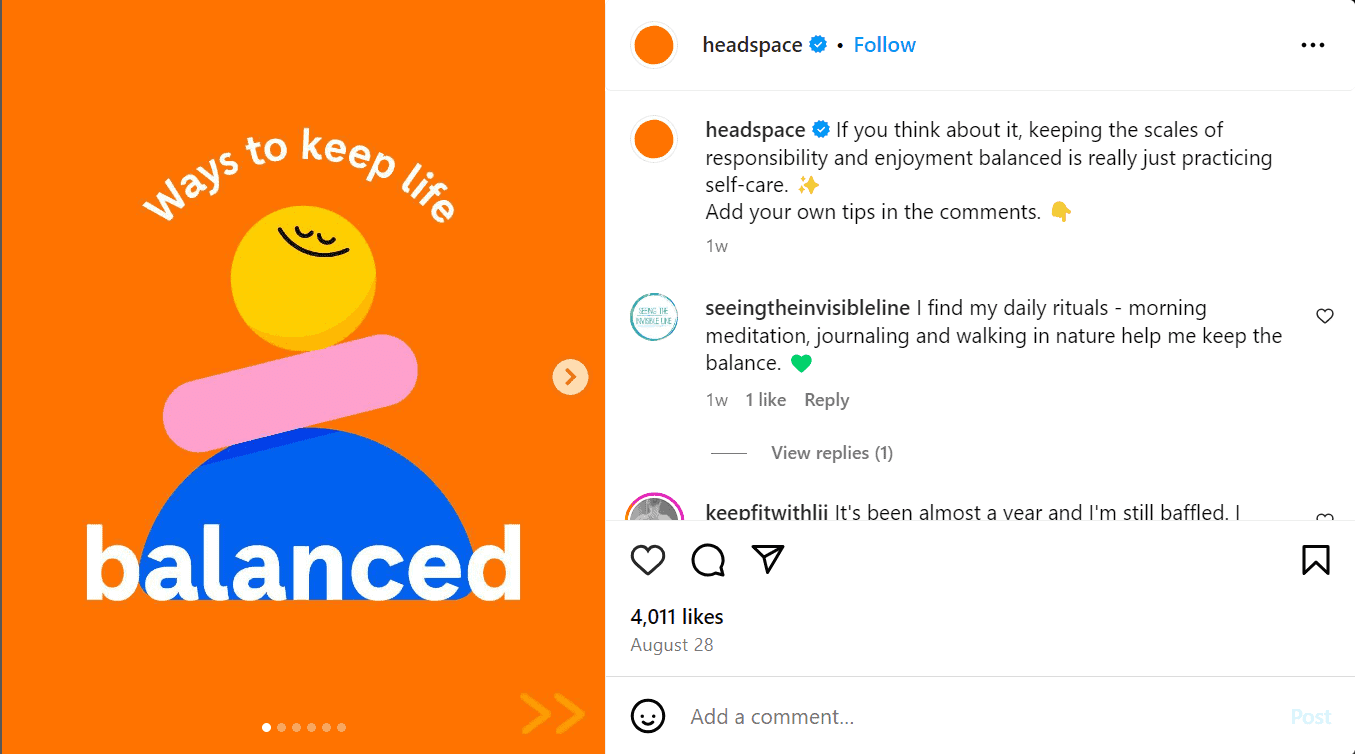
When you come across any of these brands’ content, you immediately think, “Oh, they’re so much fun” or “Hey, they sound corporate. They must be true professionals.”
What’s most important is not the tone itself but the fact that each brand mentioned here maintains the same tone across other social media channels besides Instagram.
Duolingo is always the same playful bird, even on Tiktok, where it uses Mascot, Duo the owl, in playful, often absurd skits that engage users while subtly promoting language learning.
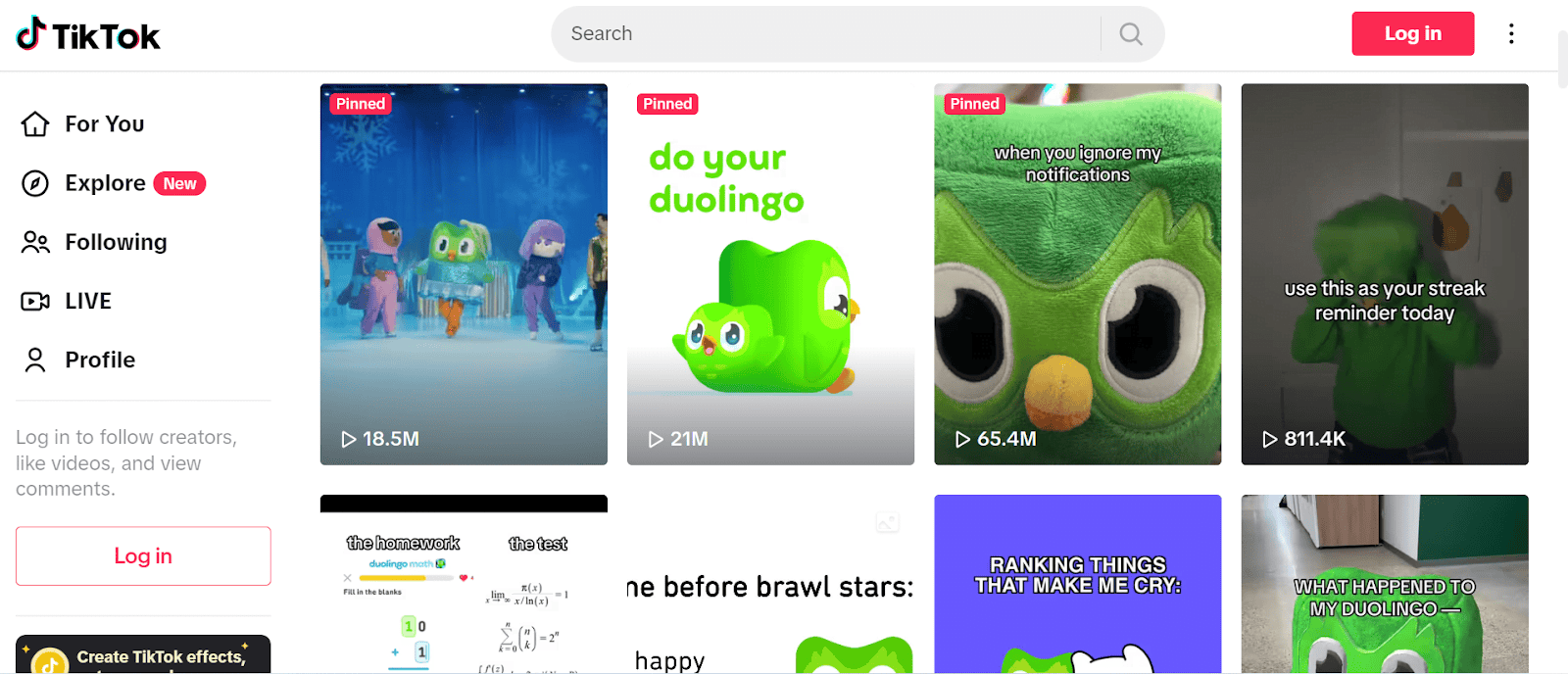
Likewise, Gymshark retains its bold and inclusive sound, whereas Headspace keeps the calm and motivational approach.
That’s called tone consistency.
Visual Theme
Theme consistency refers to maintaining a cohesive visual and conceptual style on social channels. It involves using the same or slight variations of the same color schemes, fonts, imagery, and overarching ideas or messages that align with your brand identity.
Take Coca-Cola as an example. Their theme color is predominantly red, which reflects energy, excitement, and a sense of refreshment. This color is a core element of their branding and is consistently used across their designs and marketing materials, reinforcing their iconic and universally recognizable identity.
Coca-Cola on Instagram:
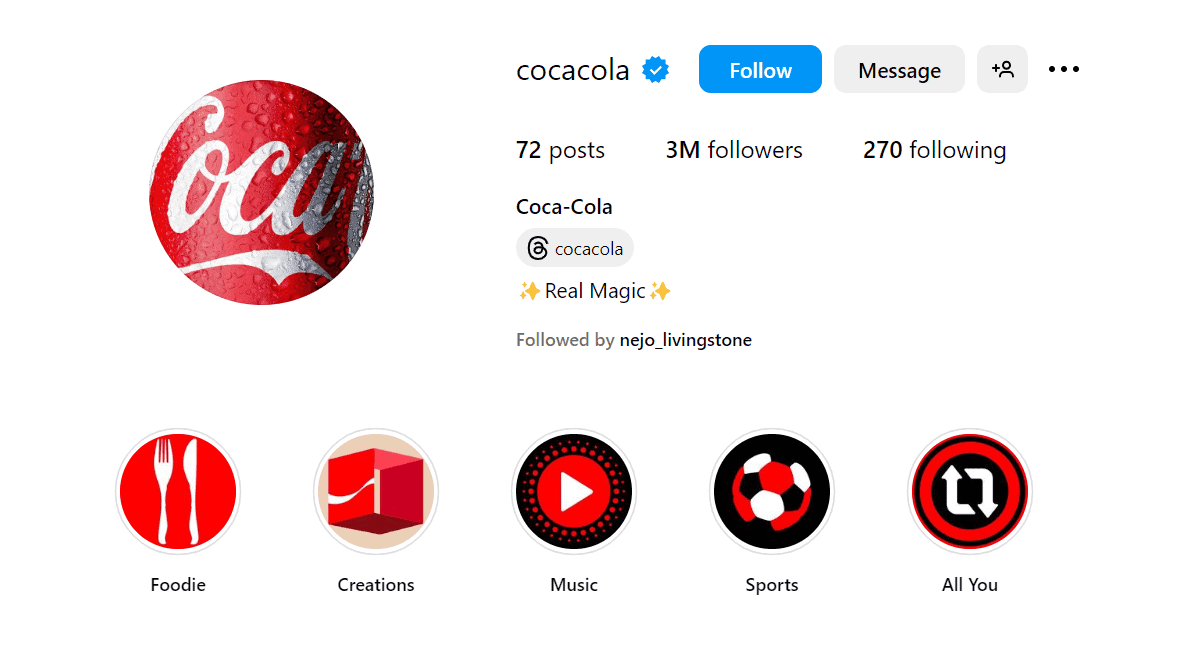
It’s all shades of red. But what about Tiktok?
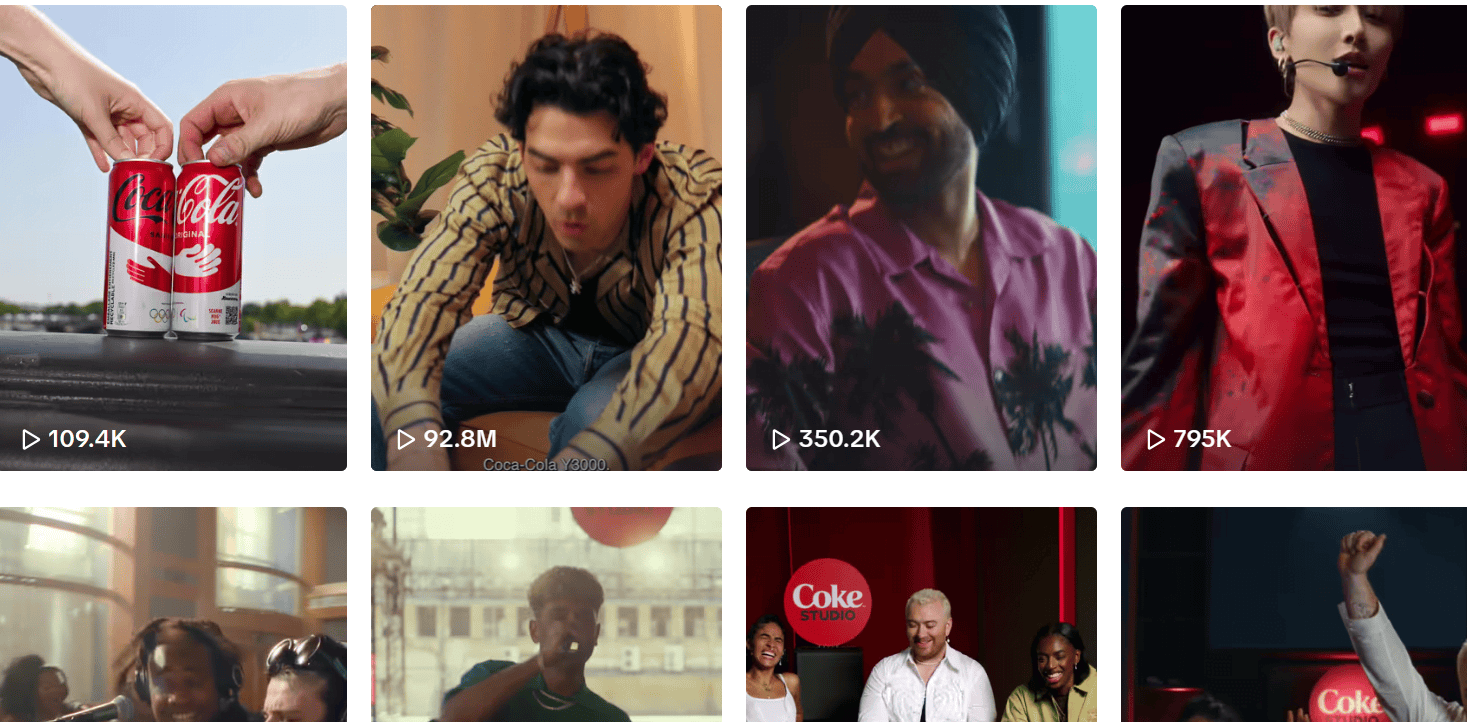
Not so much different.
McDonald’s is a global fast-food chain known for its iconic menu items, such as the Big Mac and French fries, and its signature golden arches logo, which uses red and yellow theme colors to evoke warmth, appetite, and a welcoming atmosphere.
McDonald’s on Instagram:
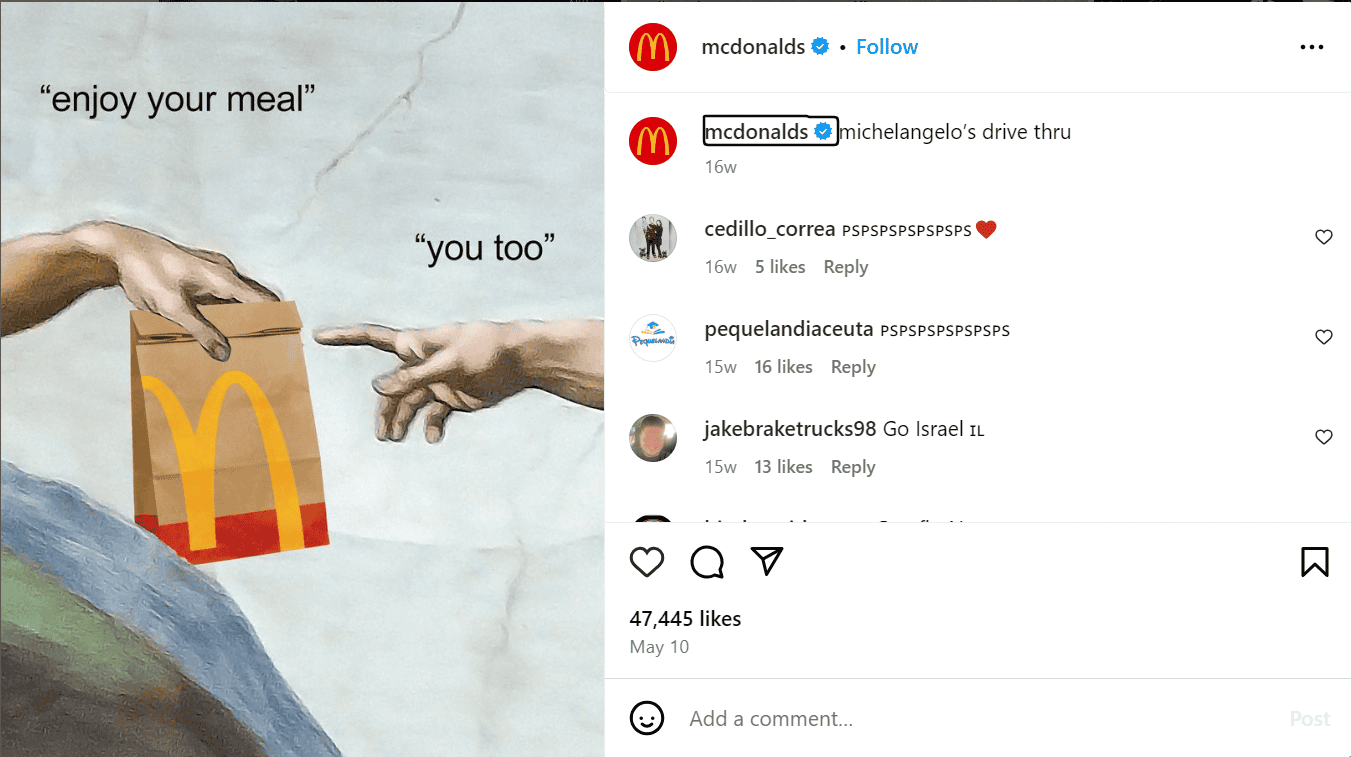
McDonald’s on Tiktok:
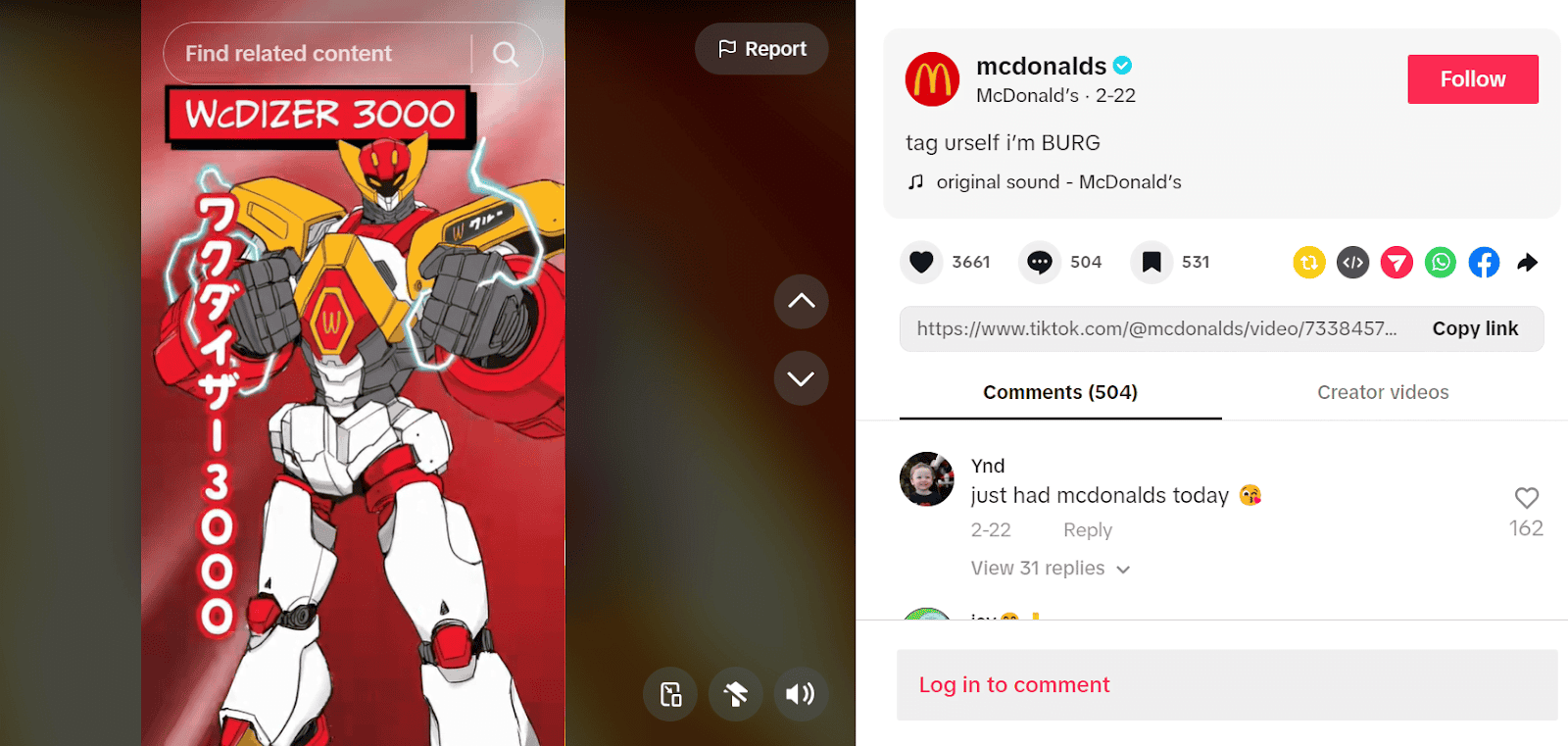
The red and yellow color theme cut across both channels, even for different content.
Not just colors. Your brand logo, image preferences, icons, and so on, all make up your visual theme, and their regular but uniform use depicts consistency on social media.
Posting Frequency
Just as social media success relies on consistent posting frequency, effective management of industrial processes requires consistent performance tracking. ERP systems, like those offered by RealSteel, ensure that your operations are continuously monitored and optimized. This ongoing evaluation helps businesses maintain operational consistency and achieve their goals, much like how regular content updates can drive better engagement and visibility on social media platforms.
How many times should you post within a week to be consistent?
Well, there’s no agreed figure. Brands like Sprinklr suggest posting 3-5 times weekly on LinkedIn, 1-2 times daily on Instagram, and about once daily on Facebook. Others suggest slightly different variations.
“The thing is, consistency depends on several factors, such as your resources, the type of audience you’re engaging, platform algorithms, and brand goals. For instance, B2B audiences don’t really need 2-3 daily posts from you, but B2C audiences would appreciate even as many as five posts daily”, Sergey Taver, Marketing Manager at Precision Watches, shares.
Additionally, social media algorithms don’t really focus on how many times you publish but on the quality of your content. However, a brand posting quality content daily will likely have more visibility than another brand posting quality content thrice weekly in the same industry and under the same circumstances.
So, what posting frequency is considered consistent?
Dean Koenning, Founder at Internet Fame, concludes, “The answer is as many as you need to keep your audience engaged without compromising content quality or overfilling their feeds. If posting once daily and thrice weekly fits in, then maintain it.”
Hubspot follows the same principle and publishes just about 15-20 times monthly, equating to 4-5 posts weekly.
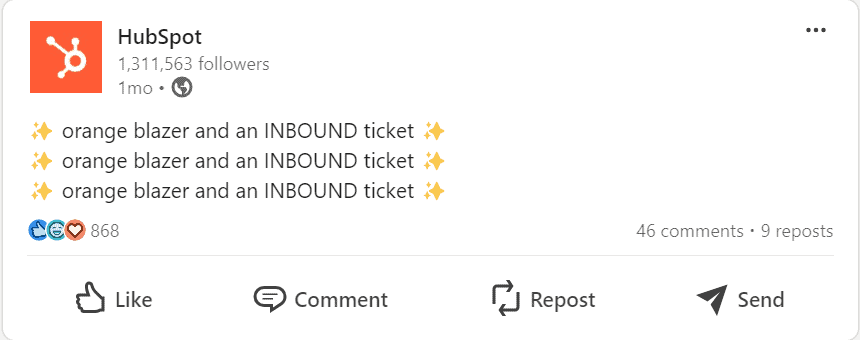
In contrast, WordPress posts about 20-30 and as much as twice daily.
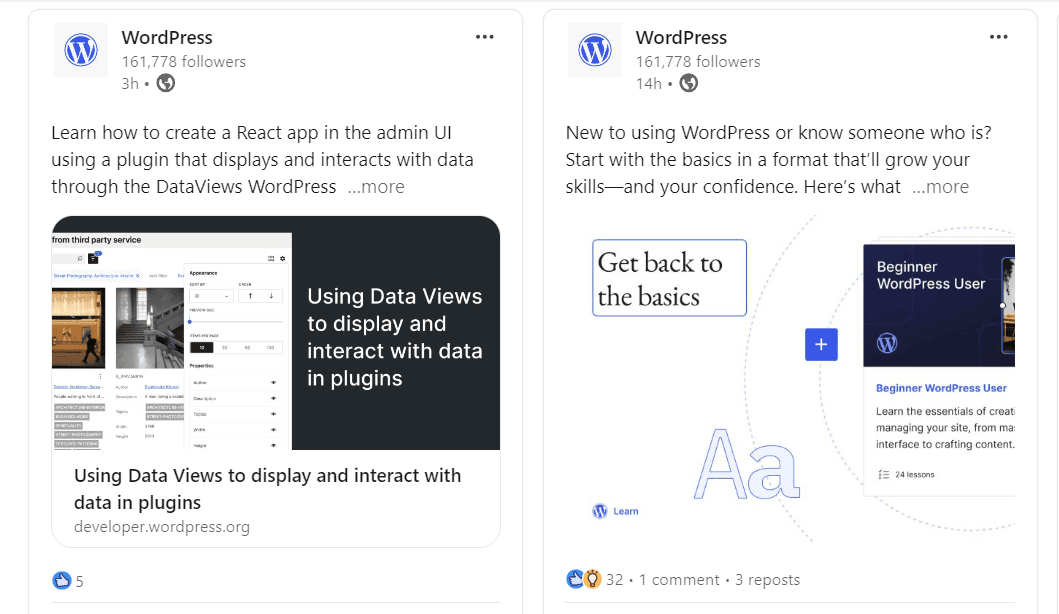
But notice they don’t drop content today and ditch for weeks. That’s not regular. You have to show up uniformly and predictably.
Engaging With Your Audience
Engaging with your audience is essential for building lasting relationships. This concept is similar to how Helix Sleep fosters strong customer relationships by offering high-quality mattresses for kids. By focusing on creating exceptional products and engaging with customers through social media, Helix Sleep builds a loyal customer base. Just as consistent and meaningful engagement with your social media audience fosters loyalty, delivering quality products and attentive customer service strengthens brand connections and drives customer satisfaction.
Consistency also involves regularly building rapport with your audience on social media, such as responding to comments on your posts, leaving a trace on followers’ posts, rolling out polls and quizzes, or conducting user-generated content contests.
While creating content tells your audience you’re available, engagement shows you care about them. Regularly doing that helps build a unique brand-follower relationship.
Benefits Of Maintaining Consistency In Social Media Marketing
Consistency is all about building an always-available presence. Here’s why your social media marketing strategy needs it.
Brand Awareness And Recognition
“A green mermaid logo on every cup, seasonal drinks like the Pumpkin Spice Latte, and daily coffee rituals. You just have every reason to believe that’s Starbucks, regardless of where you see their cup,” says Chris Aubeeluck, Head of Sales and Marketing at Osbornes Law.
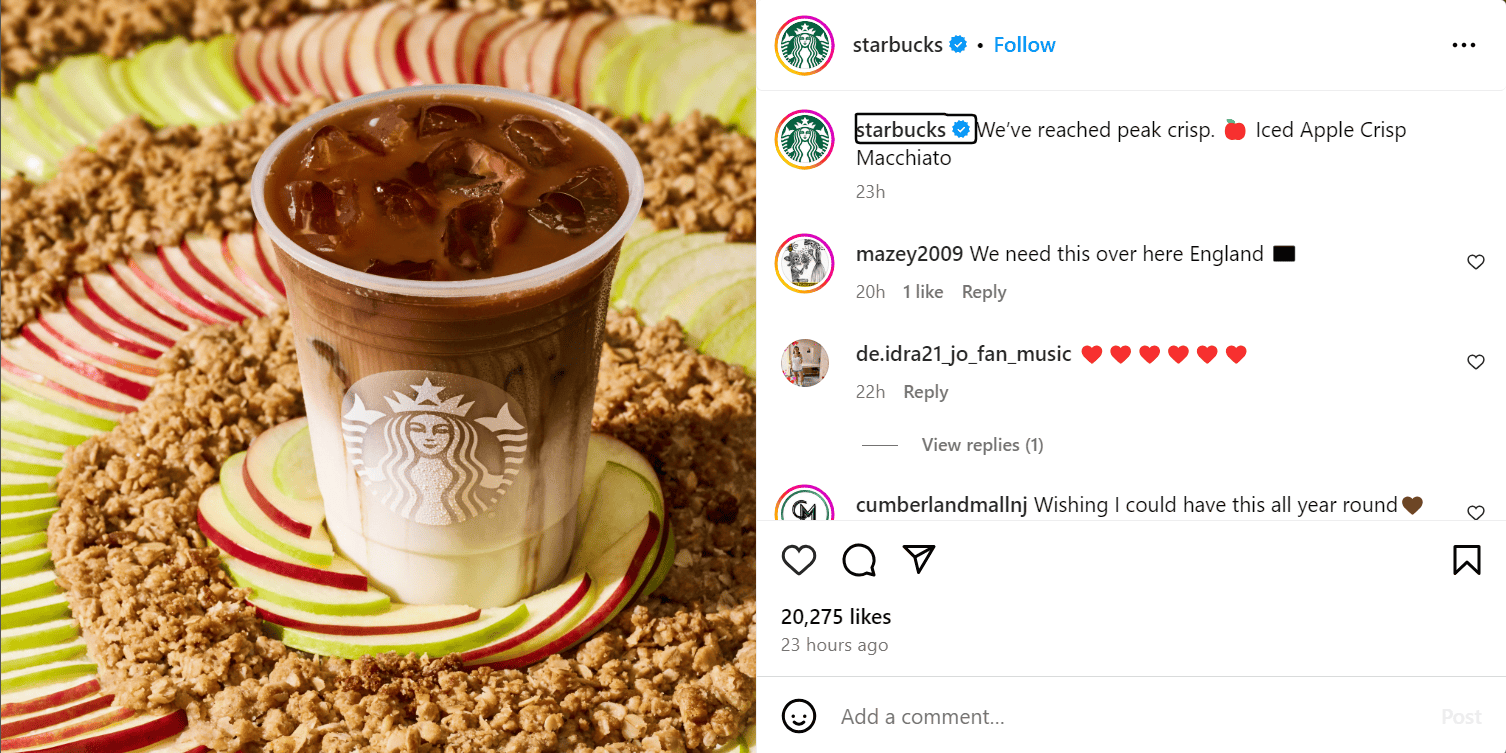
Tone and theme consistency help build awareness, especially if you’re entering a new market or you’re new to the competition. The more people see your marketing elements, the more you become branded in their minds. It goes from “Who this?” to “Oh, Starbucks.”
From awareness, it becomes recognition. They know it’s you even if your name is not stuck on the coffee cup, assuming you were Starbucks. In the same way, people can recognize an iPhone just by the cameras alone.
Posting optimally also contributes to building awareness. When new posts show up today, tomorrow, and the third, your new audience will likely dig in and find out who you are.
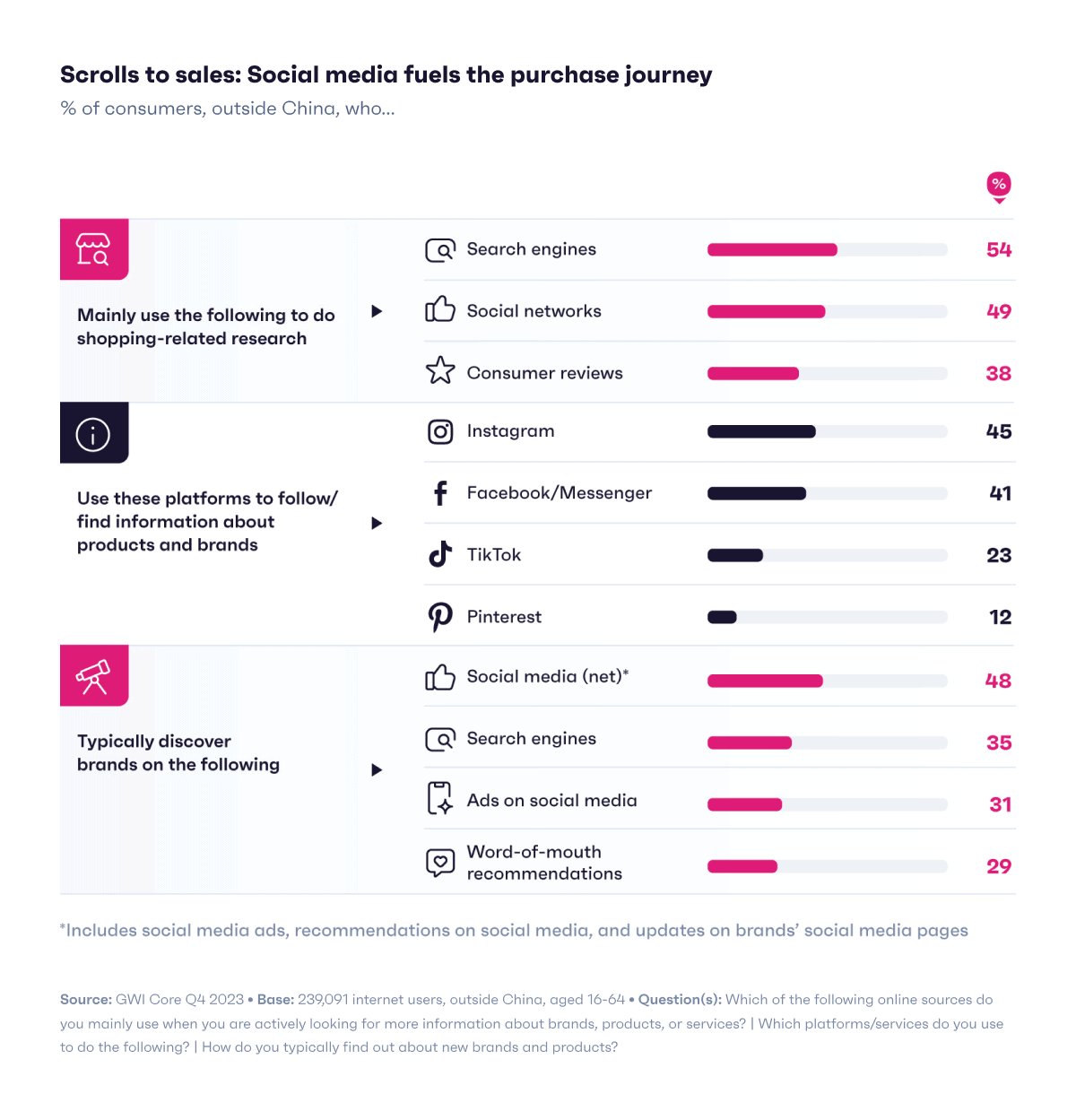
Source: Gwi
Audience Engagement And Loyalty
This is where the fourth element of consistency comes in—engaging your audience. Posting quality content and appealing to followers’ content thirst boosts awareness, but engagement with a gamified content approach and personalized interactions shows you value them.
The more your audience feels valued, the more likely they are to engage with your future posts or even take a step forward to become your customers. When an engaged follower becomes a customer, they’re a step closer to becoming your brand advocate”, says Ben Sweetlove, Founder of ProNarrative.
Take Glossier as an example. The brand frequently shares user-generated content, reposts customer reviews, and interacts directly with its community on social media. This approach creates a strong sense of connection and trust with its audience.
Here’s an example:
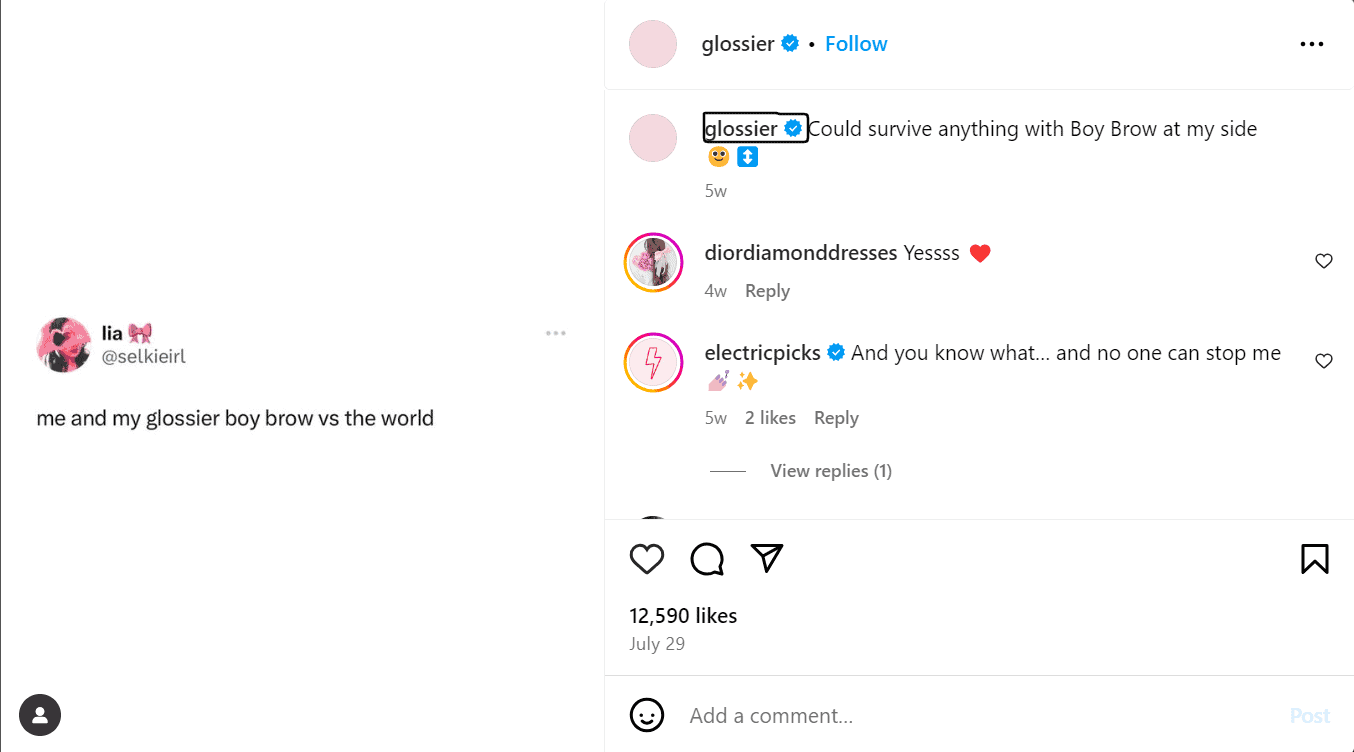
This repost gives Lia an unexpected visibility, which she is likely to appreciate. That’s bingo for loyalty and continued advocacy.
Business Growth
Consistency plays a crucial role throughout your customer journey—from the initial stages of awareness and consideration to decision-making and the final purchase. It helps you give prospects the right amount of push until they buy.
Even after customers buy, continuous social engagement can result in upsells, cross-sells, and effective retention. This, in turn, helps your business capitalize on existing customers, reduce acquisition costs, expand the customer base, and grow.
How To Stay Consistent In Your Social Media Marketing
Now that you know what and why consistency is essential for growth, let’s see how to implement this key element in your social media marketing strategy.
Create A Social Media Marketing Brand Guideline
A Social Media Marketing Brand Guideline is a set of rules and standards guiding your tone of voice, color schemes, typography, imagery, posting frequency, and content themes on social media platforms.
This is essential for your consistency, as it helps your content team create content that looks and feels cohesive across all your social media marketing channels regardless of when or where. Partnering with a social media marketing agency can ensure that this consistency is maintained across platforms, while also optimizing your content for each specific audience.
To create a practical guideline, do the following:
- Identify your target audience. Understand who you are speaking to, including their demographics, interests, and behaviors, to tailor your content accordingly. A B2B audience needs less aggressive content frequency than a B2C audience.
- Specify color schemes, fonts, logo usage, and tone. According to Jonathan Feniak, General Counsel at LLC Attorney, “This includes defining the exact color palette (primary and secondary colors), selecting specific headings and body text font types, determining proper logo placement and size across posts, and message tone.”
- Include content types for which occasions. Let your social media management team know when to use videos to pass a message and when infographics will do the job better. Also, emphasize minor details like character count, video length, and hashtag usage.
- Set posting frequency. This includes the number of posts in a day, the number of days per week, and the number of times monthly. Posting time is also important. Different social media platforms have a peak time for engagement, which is also the right time to post in a day.
- Outline engagement and interaction strategies. This will guide how your handlers respond to comments, direct messages, or hit back at competitors on social media.
- Incorporate platform-specific guidelines. Instagram prioritizes fashionista video content, X (formerly Twitter) encourages free speech, and TikTok favors virality clips. Know what each platform wants and include it in your guidelines.
- Review and update regularly. Algorithms, goals, and the audience’s needs change. Optimize your guidelines to reflect these changes and ensure maximum results.
Distribute this guideline and educate your team on the importance of following the instructions inside.
Design And Stick To A Social Media Content Calendar
A social media content calendar, or an editorial calendar, refers to a comprehensive outline of your upcoming posts, including where they will be published and when. More detailed calendars include content type, topic or focus, theme, hashtags to use, and the assigned team.
This approach helps maintain consistency by organizing posts in advance, aligning content with goals, and allowing you to track performance. It also makes it easier to adjust strategies based on real-time results.
To create a content calendar:
- Choose tools that offer content calendar features, such as Hootsuite or Co-schedule. Some of these tools have prebuilt templates, but you can download them from third-party websites and import them or create one from scratch, depending on your needs.
- Do your content research and dig out topics or trends to write on for a particular period on your calendar. You can create topics to cover for months, months, or even weeks.
- Assign a team to handle the content creation. Include deadlines for submitting each piece of content at least a week before publishing it.
- Use automation tools like Bulk.ly to schedule each completed post to be automatically published at a particular date and time. Alternatively, map a date to manually publish each piece of content and assign someone to handle its execution using tools like Trello.
Note that you can always adjust your content calendar, especially when trends change abruptly.
Prioritize Regular Engagement
Morgan Taylor, Co-Founder of Jolly SEO, says, “Engage your social audience with user-generated content campaigns like Starbucks did. The coffee drink hegemon encouraged customers to share their experiences and promoted the use of hashtags like #StarbucksLove, which currently appears in over 120,000 Instagram posts.”
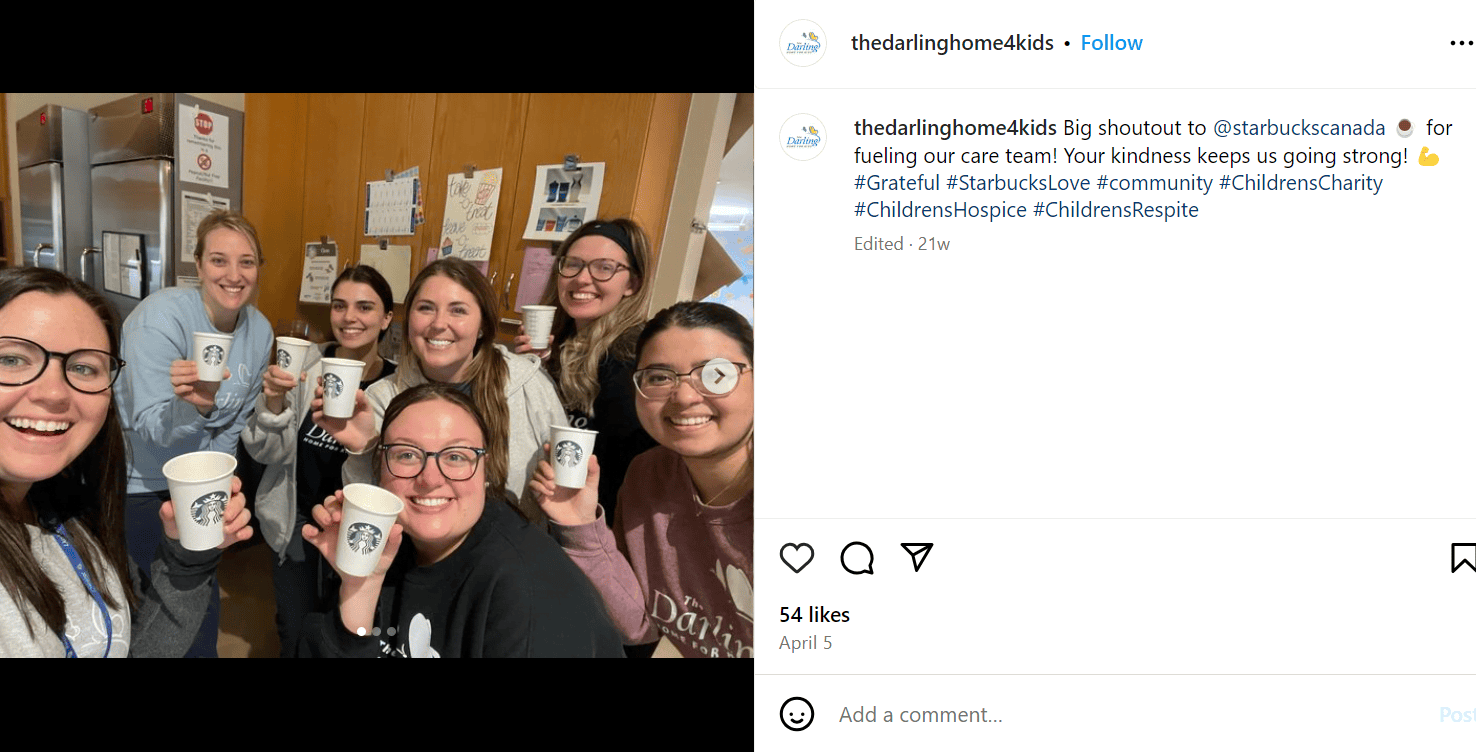
Other ways include commenting on your followers’ posts, whether you were mentioned or not. See how Nike did that below.
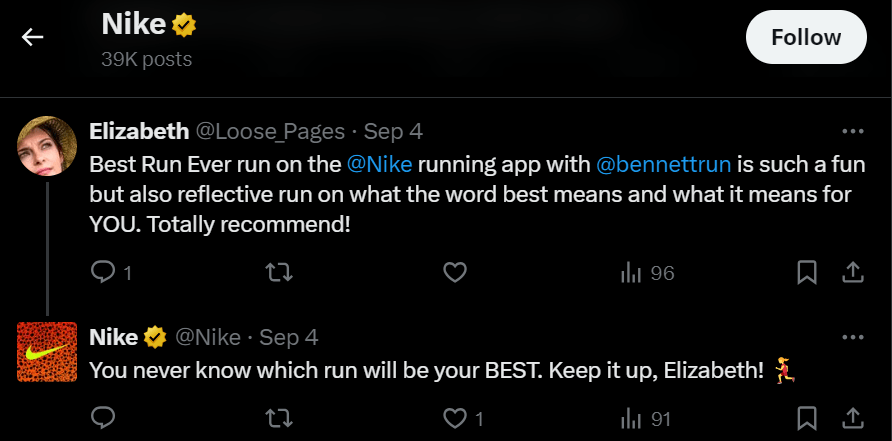
You can also run interactive polls like Hubspot and occasionally host live sessions like Sephora.
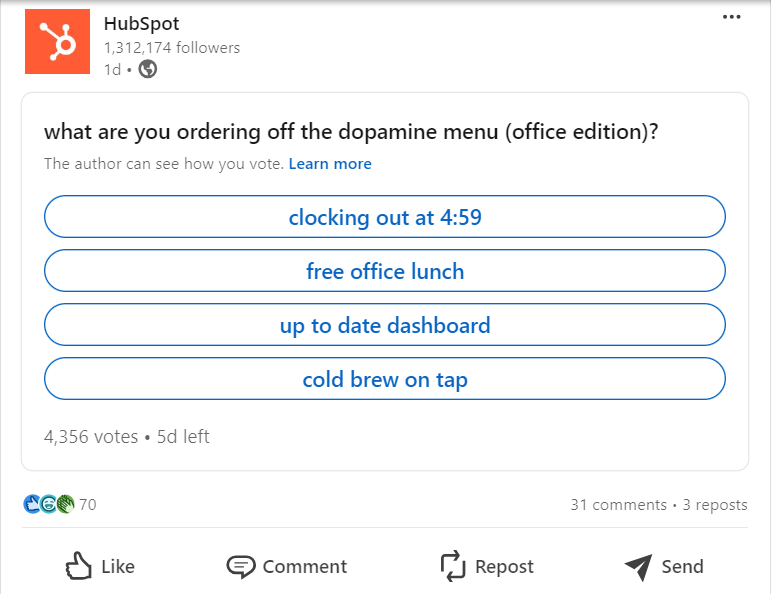
Leverage Content Scheduling And Management Platforms
Use social media content scheduling platforms like Bulk.ly to automate content publishing and post recycling. Bulk.ly can also help you bulk upload content, shuffle your calendar posts, assign relevant hashtags, and streamline drip scheduling for extended periods.
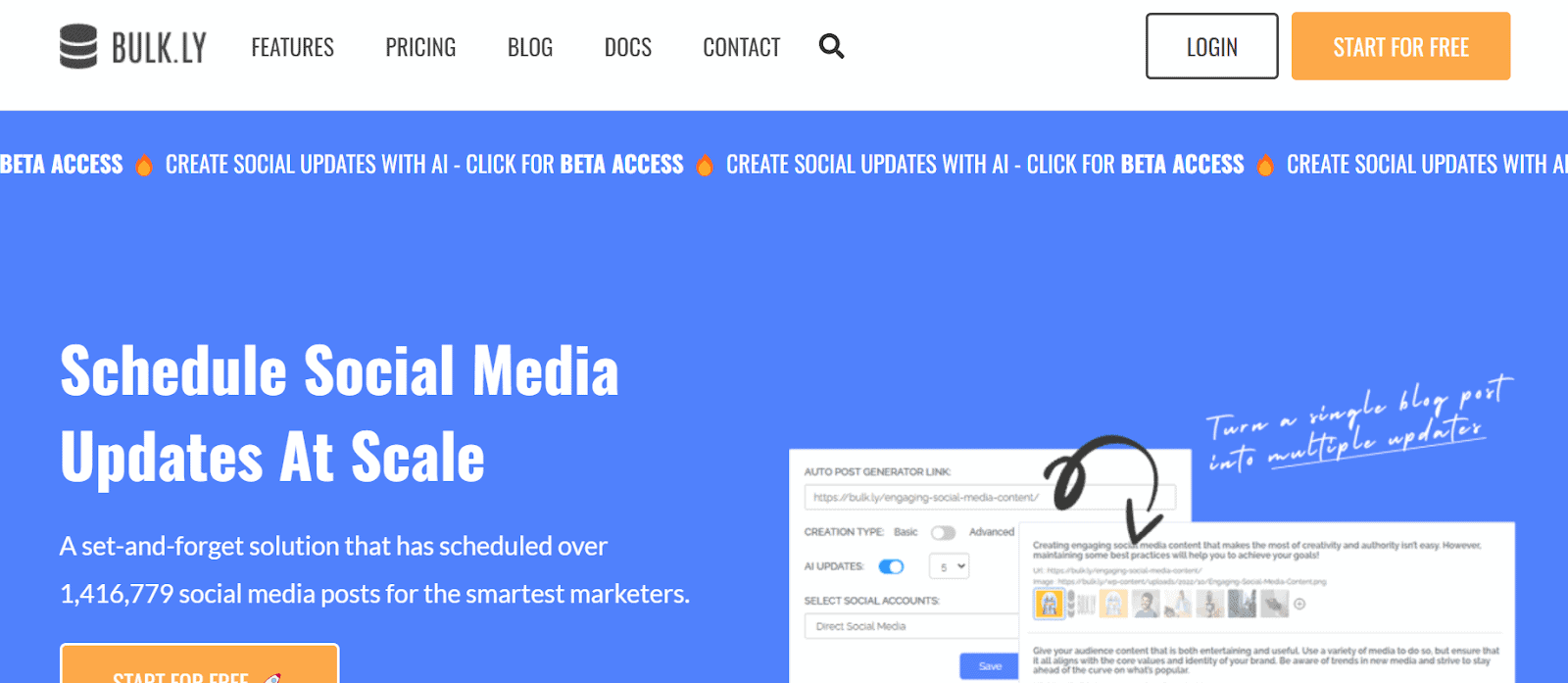
We’ve also introduced a smart post generator that can create up to 500 pieces of social media content monthly for different platforms, including Pinterest, Twitter, and LinkedIn.
These features come together to eliminate content pauses and inconsistencies, which can result from human forgetfulness, a lack of sufficient resources, or other errors.
Track Performance Using Social Media Analytics
You can use Google Analytics tool to monitor your social media account growth or simply use centralized tools like Bulk.ly to track and manage your results. See which posts are performing well—based on length, format, time of posting, platform, and trends.
Collate insights from these reports to optimize or change your social media strategy for better results. Iterate this process to continuously refine your approach to engaging your audience.
Final Thoughts on Consistency In Social Media Marketing
Consistency rewards. Talk about increased brand awareness and recognition, audience engagement, loyalty, and overall business growth. To remain consistent, you must first create a social media brand guideline detailing your brand tone, visual theme, audience engagement, and posting frequency.
The next step is to design a social media calendar and prioritize regular engagement through UGCs, commenting, polls, and interactive quizzes for gamified experiences. Lastly, leverage social media scheduling and management tools like Bulk.ly to automate and track your workflow.

